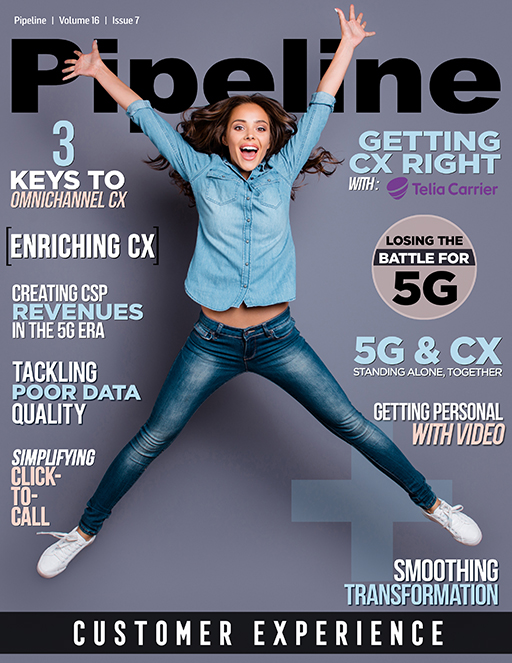5G and CX: Standing Alone, Together
By: Patrick Kalaher

You can almost write a book consisting entirely of Benjamin Franklin quotes, but one of his best known is that “by failing to prepare, you are preparing to fail.” And while no one would accuse the telecom industry—a sector that prides itself on setting global standards—of being unaware of the need to prepare for the future, there’s something about 5G that both excites and worries mobile operators.
It’s widely acknowledged that a true, stand-alone 5G network will be the most intelligent, most complex, most open and most flexible network the telecoms community has ever created. Most of the services that run over this network will involve multiple partners or players, each responsible for one piece of a brilliantly conceived puzzle. Presented to consumers and businesses as complete products, these innovations will be the result of complicated collaborations—and every player in the project will need to deliver their element perfectly for the product to please and delight end users.
Customer experience: Who’s in control?
The industry describes a true 5G network as a stand-alone network, but in reality, a 5G network will be anything but stand-alone. It will effectively be a network of service partners, orchestrated not just by the operator but also by giants from the IT industry as well as a host of smaller players. It will be a network ecosystem where it will be reasonable to ask: “Who’s actually in charge?” When we are talking about the customer experience, that’s an important question, since timely resolution of service issues requires a clear understanding of service accountability.
The best service providers (SPs) realize the importance of customer experience and give it increased priority when it comes to winning and retaining customers. While that may seem obvious, it’s not always been the case among telecom companies or mobile operators. The telecom industry has a history of incumbent, monopoly suppliers where the advent of customer choice served to trigger competition that was primarily based on price rather than on customer experience. Yet changes are afoot.
Seeing through the fog of the 5G wars
Of course, we are all familiar with the assault by OTTs on traditional telecom revenue streams such as voice and text—and the direct result. As a result, when it comes to price competition, the operators find themselves in an unsustainable race to the bottom. It’s all too easy for operators to copy and adopt each other’s services, making it almost impossible to maintain a competitive advantage through the range of products available. Therefore, the ultimate winners in the SP community will be those that provide the best overall experience, not those that offer the cheapest plan—which brings us back to 5G.
Most of the earliest forms of 5G being marketed today are being delivered over the operator’s existing 4G infrastructure. That immediately creates a gap between the 5G hype and the 5G reality. Enhanced mobile broadband (eMBB) is not a killer 5G app: nobody’s going to pay a premium to download a video marginally faster than they can over 4G. However, you can be certain that right now out there in the developer community, innovators are working on new services and applications for businesses and consumers that will take advantage of true, stand-alone 5G network systems. These will be the networks where the 5G radio path meets a 5G-ready transport layer and where the backbone networks are supported by powerful mobile edge computing capabilities.





















